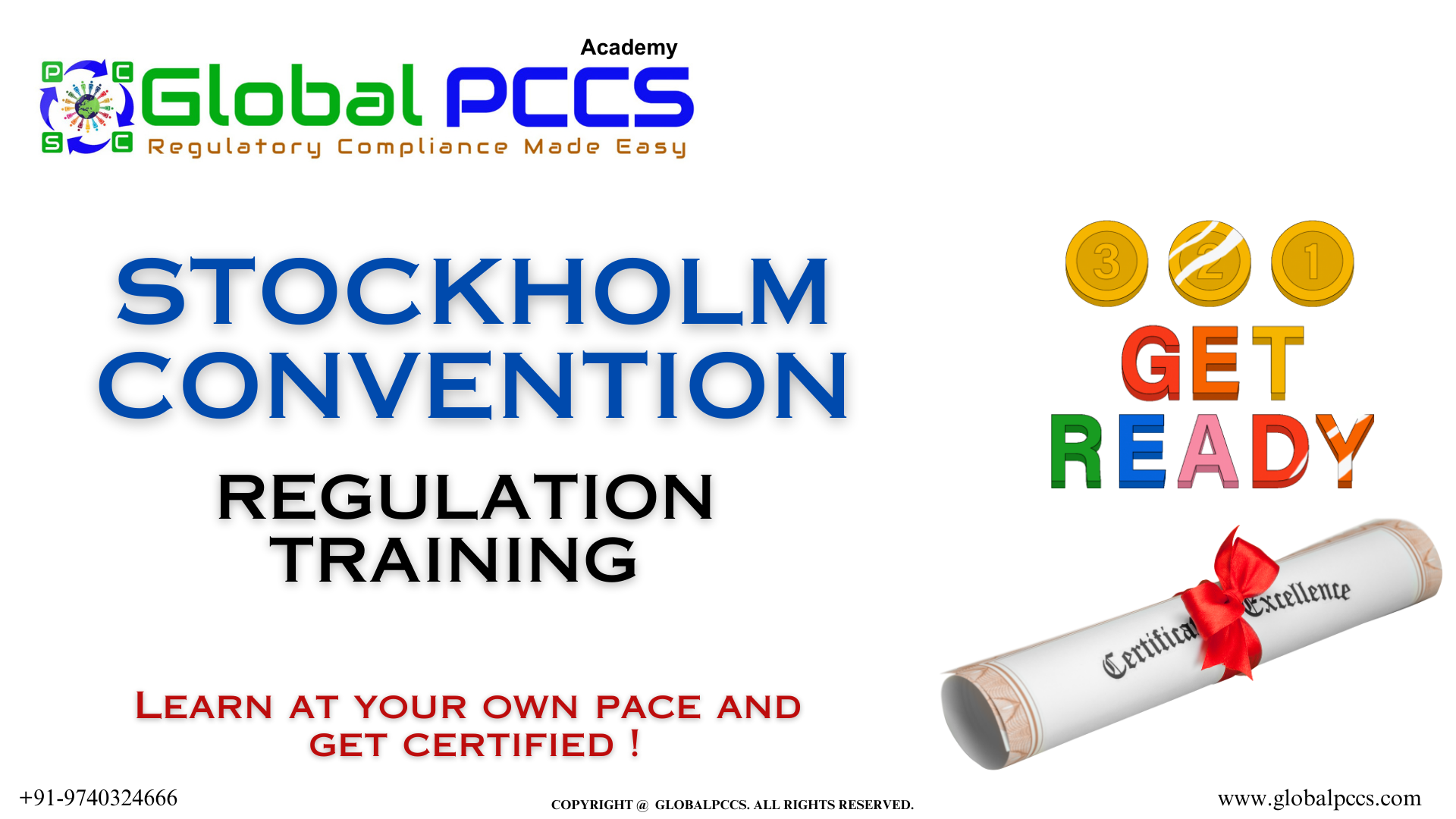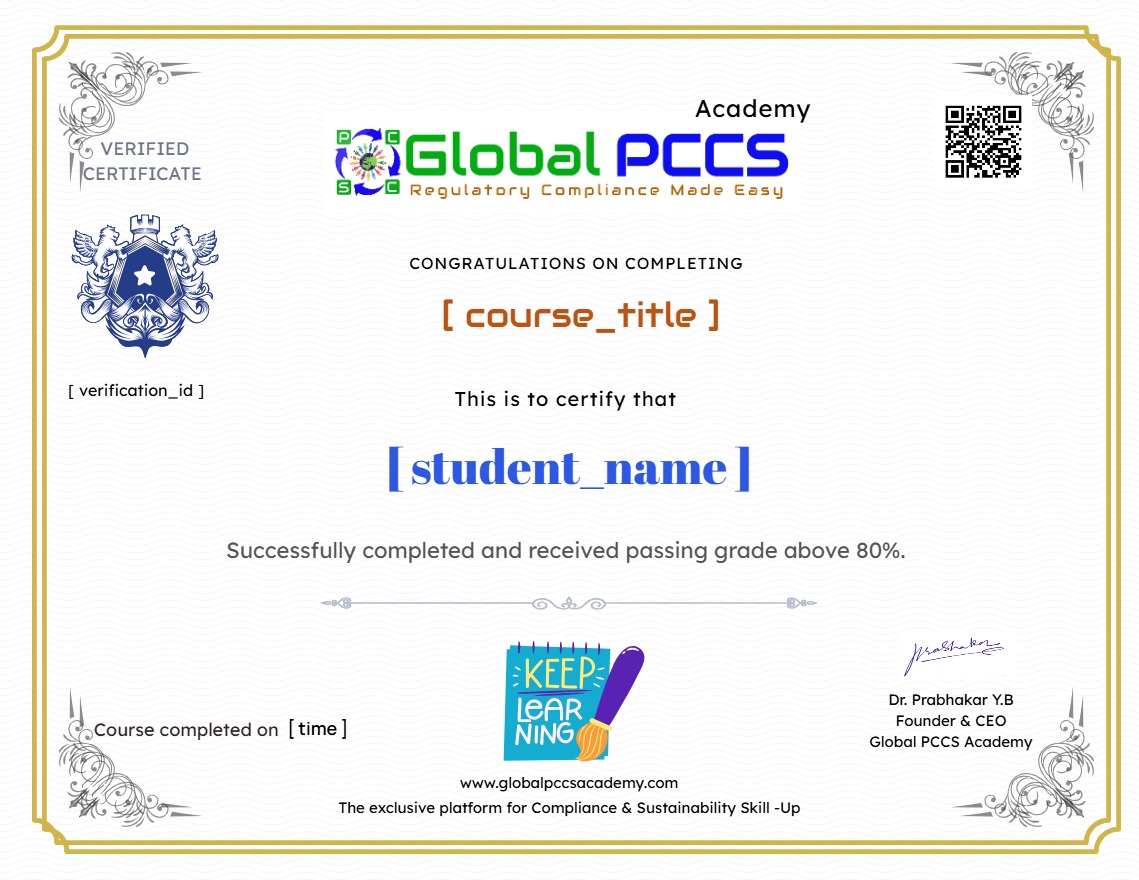Stockholm Convention

About Course
Stockholm Convention Regulation
The Stockholm Convention on Persistent Organic Pollutants (POPs) is an international treaty addressing the global threat posed by persistent organic pollutants. Adopted in 2001 and in force since 2004, it aims to eliminate or restrict the production, use, and release of specific hazardous chemicals known as POPs. These substances, including certain pesticides and industrial chemicals, persist in the environment, accumulate in living organisms, and pose severe health and environmental risks. The convention promotes international cooperation, scientific research, and measures to reduce or eliminate the release of POPs, safeguarding human health and the environment from the harmful effects of these toxic substances.
Course Content
Introduction
-
Regulation Introduction
-
Objectives
-
Scope
-
Timeline
Annexures
Obligation
Restrictions and Exemptions
Process to comply
Non compliance issues
Industry Responsibility
Conclusion / Takeaway
Test
Earn a Certificate & Up-skill yourslef
Add this certificate to your CV to demonstrate your skills & increase your chances of getting noticed & promoted.
